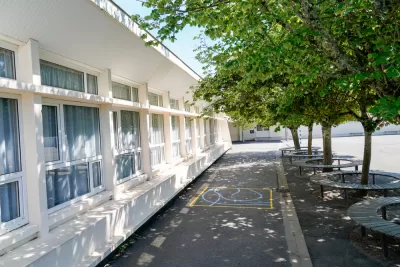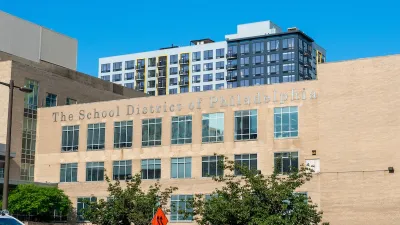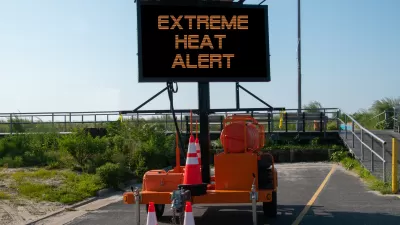California's budget now includes an unprecedented investment of $150 million to create green schoolyards and schoolyard forests at K-12 schools across the state.

There is a growing movement to transform asphalt-covered school grounds into park-like green spaces that improve children’s well-being, learning, and play while contributing to their communities' ecological health and climate resilience. The State of California, for example, recently announced that it will make available $150 million over the next two years so that school districts, nonprofits and local government agencies can apply for funding to plant trees, create gardens and other green spaces, or build shade structures on school campuses. Projects may also include planting native or drought-tolerant vegetation.
Funding from the State will enable schools to accelerate efforts to reduce the heat island effect caused by too many buildings or roads in developed areas. A key supporter of such efforts is Green Schoolyards America, which works with a variety of partners in California and across the United States to support schoolyard greening investments, policies, and programs that advance equity, climate resilience, and environmental literacy.
Green Schoolyards America also recently launched the California Schoolyard Forest System℠, a statewide initiative in partnership with the California Department of Forestry and Fire Protection (CAL FIRE) and the California Department of Education. The initiative will increase tree canopy on public school grounds across California to shade and protect PreK-12 students from extreme heat and rising temperatures due to climate change.
FULL STORY: California to invest $150 million in schoolyard greening!

Study: Maui’s Plan to Convert Vacation Rentals to Long-Term Housing Could Cause Nearly $1 Billion Economic Loss
The plan would reduce visitor accommodation by 25,% resulting in 1,900 jobs lost.

North Texas Transit Leaders Tout Benefits of TOD for Growing Region
At a summit focused on transit-oriented development, policymakers discussed how North Texas’ expanded light rail system can serve as a tool for economic growth.

Why Should We Subsidize Public Transportation?
Many public transit agencies face financial stress due to rising costs, declining fare revenue, and declining subsidies. Transit advocates must provide a strong business case for increasing public transit funding.

How to Make US Trains Faster
Changes to boarding platforms and a switch to electric trains could improve U.S. passenger rail service without the added cost of high-speed rail.

Columbia’s Revitalized ‘Loop’ Is a Hub for Local Entrepreneurs
A focus on small businesses is helping a commercial corridor in Columbia, Missouri thrive.

Invasive Insect Threatens Minnesota’s Ash Forests
The Emerald Ash Borer is a rapidly spreading invasive pest threatening Minnesota’s ash trees, and homeowners are encouraged to plant diverse replacement species, avoid moving ash firewood, and monitor for signs of infestation.
Urban Design for Planners 1: Software Tools
This six-course series explores essential urban design concepts using open source software and equips planners with the tools they need to participate fully in the urban design process.
Planning for Universal Design
Learn the tools for implementing Universal Design in planning regulations.
Ascent Environmental
Borough of Carlisle
Institute for Housing and Urban Development Studies (IHS)
City of Grandview
Harvard GSD Executive Education
Toledo-Lucas County Plan Commissions
Salt Lake City
NYU Wagner Graduate School of Public Service





























